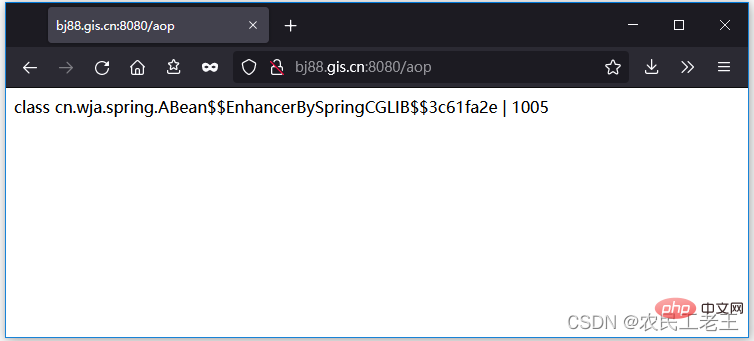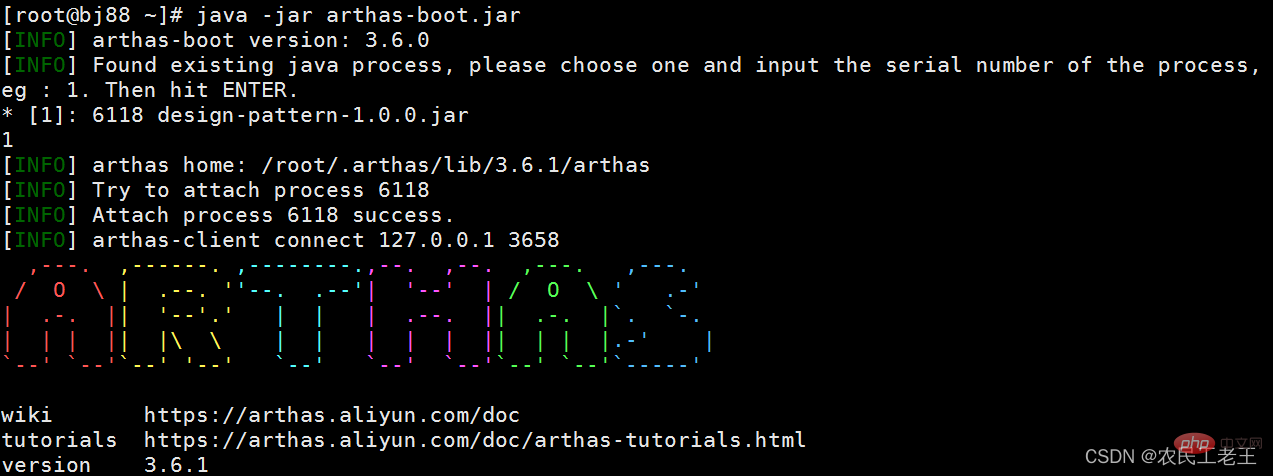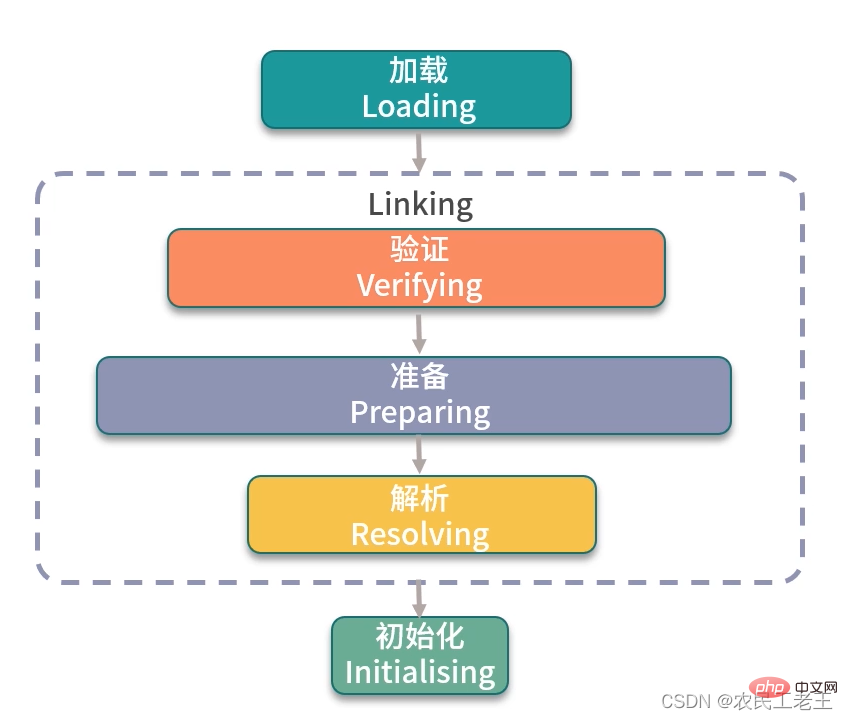Let's talk about performance-related design patterns in Java
This article brings you relevant knowledge about java, which mainly introduces the design patterns related to performance. Most design patterns are just a way of organizing code, and only part of the design Patterns are related to performance, including proxy mode, singleton mode, flyweight mode, prototype mode, etc. Let’s take a look at them together. I hope it will be helpful to everyone.

Recommended study: "java Video Tutorial"
The structure of the code has an important impact on the overall performance of the application. Code with excellent structure can avoid many potential performance problems and play a huge role in the scalability of the code; code with clear structure and clear layers can also help you find bottlenecks in the system and carry out special optimization.
Design pattern is a summary of common development techniques. It allows programmers to communicate problems in a more professional and convenient way.
In fact, most design patterns do not increase the performance of the program, it is just a way of organizing the code. In this article, we will give examples one by one to explain several design patterns related to performance, including proxy mode, singleton mode, flyweight mode, prototype mode, etc.
Proxy Mode
Proxy mode (Proxy) can control access to an object through a proxy class.
There are two main modes for implementing dynamic proxies in Java: one is to use JDK, and the other is to use CGLib. Among them, the JDK method is interface-oriented, and the main related classes are InvocationHandler and Proxy; CGLib can proxy ordinary classes, and the main related classes are MethodInterceptor and Enhancer.
The interview frequency for this knowledge point is very high.
CGLib
package cn.wja.proxy.cglibproxy;import org.springframework.cglib.proxy.MethodInterceptor;import org.springframework.cglib.proxy.MethodProxy;import java.lang.reflect.Method;public class CglibInterceptor implements MethodInterceptor {
@Override
public Object intercept(Object o, Method method, Object[] objects, MethodProxy methodProxy) throws Throwable {
return methodProxy.invokeSuper(o, objects);
}}package cn.wja.proxy.cglibproxy;import cn.wja.proxy.jdkproxy.Target;import cn.wja.proxy.jdkproxy.TargetImpl;import org.springframework.cglib.proxy.Enhancer;public class CglibFactory {
public static Target newInstance() {
Enhancer enhancer = new Enhancer();
enhancer.setSuperclass(TargetImpl.class);
enhancer.setCallback(new CglibInterceptor());
return (Target) enhancer.create();
}
public static void main(String[] args) {
Target target = newInstance();
System.out.println(target.targetMetod(4));
}}JDK
package cn.wja.proxy.jdkproxy;public interface Target {
int targetMethod(int i);}package cn.wja.proxy.jdkproxy;public class TargetImpl implements Target {
@Override
public int targetMethod(int i) {
return i * i;
}}package cn.wja.proxy.jdkproxy;import java.lang.reflect.InvocationHandler;import java.lang.reflect.Method;public class JdkInvocationHandler implements InvocationHandler {
private Target target;
public JdkInvocationHandler(Target target) {
this.target = target;
}
@Override
public Object invoke(Object proxy, Method method, Object[] args) throws Throwable {
//before
Object object = method.invoke(target, args);
//after
return object;
}}package cn.wja.proxy.jdkproxy;import java.lang.reflect.Proxy;public class JdkFactory {
public static Target newInstance(Target target) {
Object object = Proxy.newProxyInstance(JdkInvocationHandler.class.getClassLoader(),
new Class>[]{Target.class},
new JdkInvocationHandler(target));
return Target.class.cast(object);
}
public static void main(String[] args) {
Target t = new TargetImpl();
Target target = newInstance(t);
System.out.println(target.targetMethod(4));
}}The following are the JMH test results of JDK mode and CGLib mode proxy speed:
| Benchmark | Mode | Cnt | Score | Error | Units |
|---|---|---|---|---|---|
| ProxyBenchmark.cglib | thrpt | 10 | 78499.580 | ±1771.148 | ops/ms |
| ProxyBenchmark.jdk | thrpt | 10 | 88948.858 | ±814.360 | ops/ms |
The JDK version I am using now is 1.8. You can see that the speed of CGLib is not that fast (rumored to be 10 times higher). In comparison, It even slows down slightly.
Let’s take a look at the proxy creation speed. The results are as follows. It can be seen that in terms of proxy class initialization, the throughput of JDK is twice that of CGLib.
| Benchmark | Mode | Cnt | Score | Error | Units |
|---|---|---|---|---|---|
| thrpt | 10 | 7281.487 | ± 1339.779 | ops/ms | |
| thrpt | 10 | ##15612.467± 268.362 | ops/ms |
The above is the detailed content of Let's talk about performance-related design patterns in Java. For more information, please follow other related articles on the PHP Chinese website!

Hot AI Tools

Undresser.AI Undress
AI-powered app for creating realistic nude photos

AI Clothes Remover
Online AI tool for removing clothes from photos.

Undress AI Tool
Undress images for free

Clothoff.io
AI clothes remover

Video Face Swap
Swap faces in any video effortlessly with our completely free AI face swap tool!

Hot Article

Hot Tools

Notepad++7.3.1
Easy-to-use and free code editor

SublimeText3 Chinese version
Chinese version, very easy to use

Zend Studio 13.0.1
Powerful PHP integrated development environment

Dreamweaver CS6
Visual web development tools

SublimeText3 Mac version
God-level code editing software (SublimeText3)

Hot Topics
 1663
1663
 14
14
 1420
1420
 52
52
 1315
1315
 25
25
 1266
1266
 29
29
 1239
1239
 24
24
 Break or return from Java 8 stream forEach?
Feb 07, 2025 pm 12:09 PM
Break or return from Java 8 stream forEach?
Feb 07, 2025 pm 12:09 PM
Java 8 introduces the Stream API, providing a powerful and expressive way to process data collections. However, a common question when using Stream is: How to break or return from a forEach operation? Traditional loops allow for early interruption or return, but Stream's forEach method does not directly support this method. This article will explain the reasons and explore alternative methods for implementing premature termination in Stream processing systems. Further reading: Java Stream API improvements Understand Stream forEach The forEach method is a terminal operation that performs one operation on each element in the Stream. Its design intention is
 PHP: A Key Language for Web Development
Apr 13, 2025 am 12:08 AM
PHP: A Key Language for Web Development
Apr 13, 2025 am 12:08 AM
PHP is a scripting language widely used on the server side, especially suitable for web development. 1.PHP can embed HTML, process HTTP requests and responses, and supports a variety of databases. 2.PHP is used to generate dynamic web content, process form data, access databases, etc., with strong community support and open source resources. 3. PHP is an interpreted language, and the execution process includes lexical analysis, grammatical analysis, compilation and execution. 4.PHP can be combined with MySQL for advanced applications such as user registration systems. 5. When debugging PHP, you can use functions such as error_reporting() and var_dump(). 6. Optimize PHP code to use caching mechanisms, optimize database queries and use built-in functions. 7
 PHP vs. Python: Understanding the Differences
Apr 11, 2025 am 12:15 AM
PHP vs. Python: Understanding the Differences
Apr 11, 2025 am 12:15 AM
PHP and Python each have their own advantages, and the choice should be based on project requirements. 1.PHP is suitable for web development, with simple syntax and high execution efficiency. 2. Python is suitable for data science and machine learning, with concise syntax and rich libraries.
 PHP vs. Other Languages: A Comparison
Apr 13, 2025 am 12:19 AM
PHP vs. Other Languages: A Comparison
Apr 13, 2025 am 12:19 AM
PHP is suitable for web development, especially in rapid development and processing dynamic content, but is not good at data science and enterprise-level applications. Compared with Python, PHP has more advantages in web development, but is not as good as Python in the field of data science; compared with Java, PHP performs worse in enterprise-level applications, but is more flexible in web development; compared with JavaScript, PHP is more concise in back-end development, but is not as good as JavaScript in front-end development.
 PHP vs. Python: Core Features and Functionality
Apr 13, 2025 am 12:16 AM
PHP vs. Python: Core Features and Functionality
Apr 13, 2025 am 12:16 AM
PHP and Python each have their own advantages and are suitable for different scenarios. 1.PHP is suitable for web development and provides built-in web servers and rich function libraries. 2. Python is suitable for data science and machine learning, with concise syntax and a powerful standard library. When choosing, it should be decided based on project requirements.
 PHP's Impact: Web Development and Beyond
Apr 18, 2025 am 12:10 AM
PHP's Impact: Web Development and Beyond
Apr 18, 2025 am 12:10 AM
PHPhassignificantlyimpactedwebdevelopmentandextendsbeyondit.1)ItpowersmajorplatformslikeWordPressandexcelsindatabaseinteractions.2)PHP'sadaptabilityallowsittoscaleforlargeapplicationsusingframeworkslikeLaravel.3)Beyondweb,PHPisusedincommand-linescrip
 Java Program to Find the Volume of Capsule
Feb 07, 2025 am 11:37 AM
Java Program to Find the Volume of Capsule
Feb 07, 2025 am 11:37 AM
Capsules are three-dimensional geometric figures, composed of a cylinder and a hemisphere at both ends. The volume of the capsule can be calculated by adding the volume of the cylinder and the volume of the hemisphere at both ends. This tutorial will discuss how to calculate the volume of a given capsule in Java using different methods. Capsule volume formula The formula for capsule volume is as follows: Capsule volume = Cylindrical volume Volume Two hemisphere volume in, r: The radius of the hemisphere. h: The height of the cylinder (excluding the hemisphere). Example 1 enter Radius = 5 units Height = 10 units Output Volume = 1570.8 cubic units explain Calculate volume using formula: Volume = π × r2 × h (4
 PHP: The Foundation of Many Websites
Apr 13, 2025 am 12:07 AM
PHP: The Foundation of Many Websites
Apr 13, 2025 am 12:07 AM
The reasons why PHP is the preferred technology stack for many websites include its ease of use, strong community support, and widespread use. 1) Easy to learn and use, suitable for beginners. 2) Have a huge developer community and rich resources. 3) Widely used in WordPress, Drupal and other platforms. 4) Integrate tightly with web servers to simplify development deployment.









